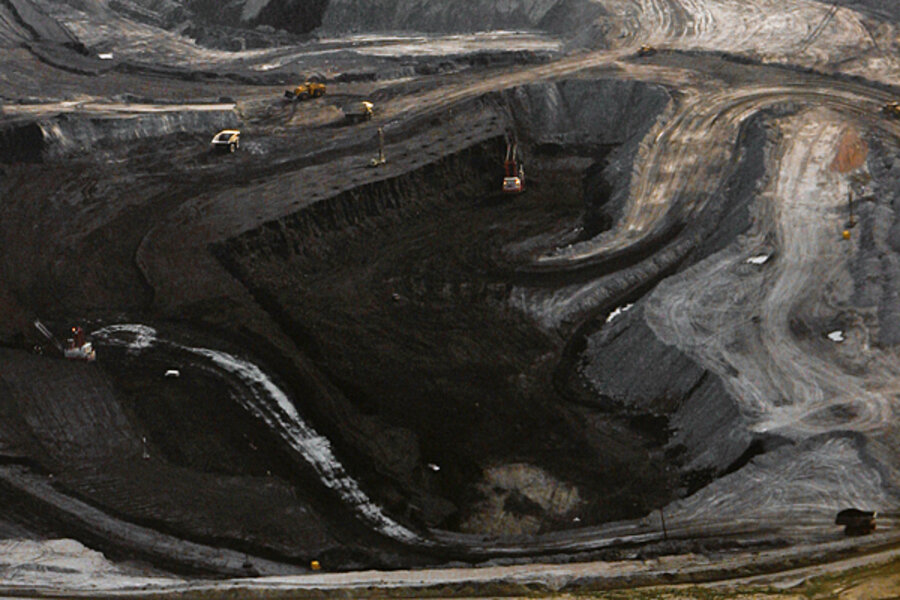Record US coal exports fuel climate change debate
No country emits more carbon dioxide than China, but at least some of that heat-trapping gas gets its start in Appalachian mines.
With cleaner-burning natural gas cutting into the their market in the United States, coal companies have found eager customers in the East, fueling urbanizing economies in Asia with cheap steelmaking coal. Coal's future in the US may have dimmed over recent years, but exports are hitting record highs.
It's why coal export terminals are emerging as a flash point in the fight against climate change. Don't be surprised if instead of reading about the Keystone XL pipeline, you are soon inundated with polarizing reports on Millennium Bulk Terminals-Longview, the Gateway Pacific Terminal, and the Morrow Pacific Project.
Those are three proposals for export terminals in Washington and Oregon that would export millions of tons of coal each year to Japan, South Korea, Taiwan, and elsewhere.
Backers of the proposal point to the economic benefits of creating thousands of jobs in areas suffering from unemployment rates above the national average. For environmentalists, the terminals mean literally adding fuel to the fire when it comes to the issue of rising greenhouse gas emissions.
"Unless we can stop these coal terminals from being built and keep our coal in the ground where it belongs, Washington state coal exports will be responsible for hastening the advance of climate change here at home and around the world," Seattle Mayor Mike McGinn said in testimony before a House subcommittee Tuesday on fossil fuel exports.
Backers of the terminals scored a victory during Tuesday's hearing when Army Corps of Engineers acting regulatory chief Jennifer Moyer told the subcommittee that the climate change impacts of burning coal abroad would not factor into the Corps' environmental review of the proposals.
"[T]he possible future shipment of coal by oceangoing vessels across the Pacific Ocean beyond the limits of US navigable waters, and the possible future off-loading, distribution, and burning of coal in Asia are attenuated and far removed from the activities regulated by the Corps at any of the three shipping facilities," Ms. Moyer said in prepared testimony. "Commercial markets drive the need for and destination of coal which could change regardless of the Corps decision regarding the proposed activities in waters within our jurisdiction."
The US exported 13.6 million tons of coal in March 2013, according to the US Energy Information Administration (EIA). That's a new monthly record. China was the No. 1 destination for that coal, followed by the Netherlands, the United Kingdom, South Korea, and Brazil.
At the moment, most of the coal destined for Asia is metallurgical coal, used to produce steel – one of the world’s biggest industrial sources of greenhouse gas emissions. In 2010, the iron and steel industry accounted for approximately 6.7 percent of total world carbon dioxide emissions, according to the World Steel Association, a Belgium-based industry association.
But exports of thermal coal, used to create electricity, are expected to pick up eventually. The challenge is the short term. US coal exports are expected to be lower in 2013 than in 2012, according to EIA, due in part to a decline in Europe, which is struggling to emerge from recession and is switching to cleaner alternatives. What's more, China has its own coal to mine and has made big strides in renewable energy, so demand there could wane. But those losses may be offset by energy-hungry populations in South Korea, Taiwan, India, and other countries.
In the US, king coal is still king. Making up 40 percent of the mix, coal is the No. 1 provider of electricity in the US. It lost some ground to cheap natural gas in recent years, but as those prices creep upward, coal's future looks brighter.






